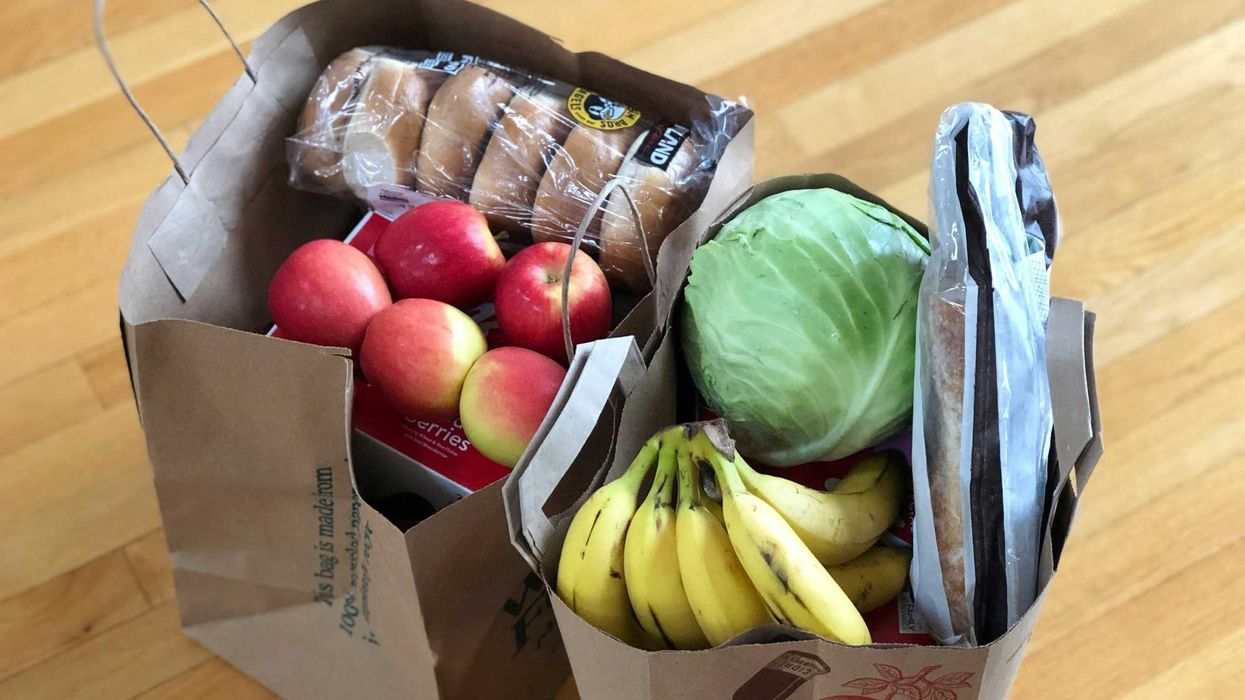Approximately half of American adults identify with either the Democratic or Republican party, leaving a huge percentage of voters up for grabs in every election. But recent actions on both sides call into question whether either party really wants to appeal to its own centrists, let alone independents.
For the past 50 years, political leaders and journalists have debated which party better represents a “big tent” that has a place for Americans of different beliefs. But in the recent past, Republicans and Democrats have attacked their own people for deviating too far from either a party line or a perception of where the party should be headed.
“When we talk about civil discourse or bridging the divide, we are usually talking about breaking down partisan walls,” said David Eisner, an expert on political collaboration who held leadership roles in both George W. Bush’s and Barack Obama’s administrations. “But right now I’m looking at intraparty fighting.”
Just in the past year:
- At least 10 state GOP organizations voted to censure or rebuke Republican members of Congress who supported the impeachment of Donald Trump.
- The Republican National Committee censured two U.S. House members, Liz Cheney and Adam Kinzinger, for participating in the Democratic-led committee investigating the Jan. 6, 2021, Capitol insurrection.
- The Arizona Democratic Party censured Sen. Kyrsten Sinema for opposing changes to the Senate filibuster rules that would have opened the door to passage of election reform legislation.
- Sen. Bernie Sanders, a leading voice of progressives, threatened to support primary challenges to Sinema and another moderate Democrat, Sen. Joe Manchin of West Virginia.
The nation should remember the words of the 40th president (who achieved the biggest winning margin of the past 45 years by appealing to voters of all stripes), according to Pearce Godwin, CEO of the Listen First Project.
“President Ronald Reagan once said, ‘The person who agrees with you 80 percent of the time is a friend and an ally – not a 20 percent traitor.’ Today, some of us treat the person who agrees with us 99 percent of the time as a 100 percent traitor. We’re seeing circular firing squads of condemnation and rejection on a hair trigger,” Godwin said.
But this isn’t a sudden change, explained Eisner, who leads bipartisan policy collaborations as president and CEO of Convergence. Rather, it’s the result of decades of political sorting. In years past, both parties could claim diversity of geography and views on policy issues such as abortion and gun rights.
“Over several decades we’ve seen sorting that brings a lot of these characteristics to one party or another,” Eisner said. “Politics isn’t something that bridges across these perspectives but instead there’s a vertical silo. Each party claims one side that creates a centrifugal force toward the extremes.”
That, combined with a growing sense of tribalism, has created a structure that looks down on what Eisner calls “in-group moderates.”
“The boundaries of the tribes become so hard that when someone inside the tribe acts in a way that appears to be moderate or reaching out, they become shunned,” he said.
Godwin found the idea of tribalism to be a threat not just to individual parties but to the American way of life.
“The more we seek belonging and validation in increasingly narrow and exclusive tribes — defined more by what we’re against than what we’re for — the more we diminish the chances of achieving our own political goals and, more importantly, the more we threaten the survival of our democratic republic, which thrives when our common American identity ranks higher than our competing tribal identities,” he said.
Republican political strategist Doug Heye, who spent years leading communications efforts on Capitol Hill and at RNC, cites a problem with party leadership.
“It's more about who controls the tent, and those who aren't in the activist tent are often cast away or dismissed as DINOs or RINOs,” he said. “These are sure signs that it's become more of a priority to have uniform agreement — where attitudes and tactics are often more important than ideas. And it's why we end up with so many candidates better off in a circus tent.”
There are some leaders willing to buck the party consensus. For example, Minority Leader Mitch McConnell and a handful of his fellow Senate Republicans criticized the RNC for declaring the Jan. 6 insurrection “legitimate political discourse.” And Maryland Gov. Larry Hogan, a possible presidential candidate, called out those who demonstrate blind devotion to Trump.
“The Republican Party that I want to get back to is the one that believes in freedom and truth and not one that attacks people who don't swear 100 people fealty to the Dear Leader,” he said on CNN.
Political reformers often point to structural changes that can lead to victorious candidates who represent the views of a broader swath of their constituencies than we see now. Partisan gerrymandering, closed primaries and winner-take-all elections contribute to a system where often politicians influence (if not define) who votes for them, diverse voices are not welcome and voters are limited to two viable candidates.
But advocates for open primaries, in which all voters can participate regardless of party affiliation, and alternative voting systems (like ranked-choice or approval voting) believe such structural changes could create an environment where “big tent” candidates are more viable.
“People really want to attract both independents and folks that disagree with them,” Eisner said. “A lot of politicians and leaders feel trapped right now. …They know that they’ll be primarily challenged if they become an in-group moderate.”
“Strict purity tests, demanding that others believe as we believe across the board or be punished, is an excellent way for an individual to end up alone and a party to end up irrelevant,” Godwin said. “Shutting down voices we don’t like is easy. Listening and finding a way forward through differences is noble and courageous.”
Some politicians are trying to achieve the structural changes Eisner is talking about. He pointed to the Bipartisan Working Group, a collection of congressional lawmakers working on cross-the-aisle policy solutions, and the Committee on the Modernization of Congress.
The Modernization Committee, as it is known, is tasked with developing recommendations to make the House of Representatives more efficient and effective, and its suggestions often go hand in hand with breaking down partisan barriers.
Included in the committee’s 140-plus recommendations are more than a dozen focused on civility and collaboration, such as promoting bipartisan tools and events or focusing on civility during the orientation program for new lawmakers.
Eisner sees two curves at work. One is an increase in extremism boosted by investments in media and politics that promote divisiveness. The other is a push toward bipartisanship and greater collaboration.
“It’s hard to see when the curve for collaboration will overtake the curve toward fragility and extremism. But it feels like it’s on a path,” he said. “Right now divisiveness is one of the top three issues of public consciousness. We have an opportunity in the coming years to do something.”






















 Despite signing a mortgage that pledged he would live in each house, Trump listed both homes as rentals. Palm Beach Daily News via Newspapers.com. Redactions by ProPublica.
Despite signing a mortgage that pledged he would live in each house, Trump listed both homes as rentals. Palm Beach Daily News via Newspapers.com. Redactions by ProPublica.
 In 1993, Trump signed a mortgage for a “Bermuda style” home in Palm Beach, pledging that it would be his principal residence. Just seven weeks later, he got another mortgage for a seven-bedroom, marble-floored neighboring property and attested that it too would be his principal residence. Obtained by ProPublica
In 1993, Trump signed a mortgage for a “Bermuda style” home in Palm Beach, pledging that it would be his principal residence. Just seven weeks later, he got another mortgage for a seven-bedroom, marble-floored neighboring property and attested that it too would be his principal residence. Obtained by ProPublica